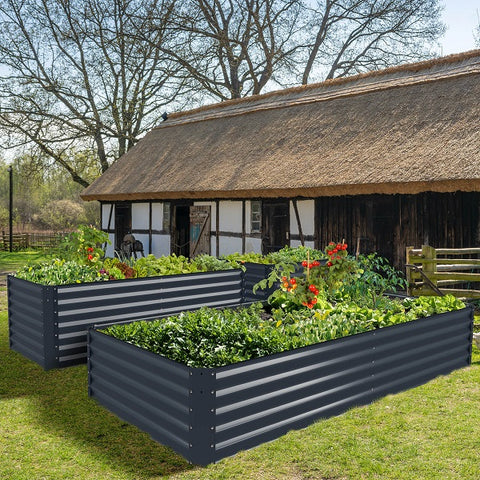Planting flower beds can be daunting for new gardeners. Especially when you don't know where to start designing flower beds. In this article, Savana will show you 3 tips for success. These gauge tips work with any style or size of planter. So, whether you have a small garden or a large garden, this flower bed design guide can make your ordinary flower beds great! Let's start planting!

1. Layering your flower beds
The first tip for growing a successful flower bed is to layer the plants. Time and time again I see people arrange plants in neat rows. All plants and flowers are the same "below the knee" height. They are planted at equal intervals and then awkwardly left to grow evenly in isolation from each other.
If you've grown this way, you're probably familiar with the tedious results you get when you grow your garden this way. Then you stuff more plants in, but it still looks the same. This is where most frustrated gardeners sadly give up.
Layering will be your secret weapon to flower border success!
Layering will completely change the style of your garden! Layering involves moving plants from smaller ground covers to intermediate layers to taller specimens. Think of it as 1, 2 and 3.
Layering garden plants in a bed works because it draws your eye from the ground up through the bed. While it guides your gaze, it also slows down your journey and view of the garden.
Ground Cover Layer 1:
These are your low to ground samples. They will be low to the ground and are also known as "ground covers." Examples include breviscap, hyssop, alpine, bedding plants, and even the herb lamium. They are a warm up for flower beds!
Herbaceous Flowering Mid Layer 2:
This is where you want to start setting your sights on mid-tier plants like knee-high to waist-high plants like geraniums, sage, Helenium, Daliahs, or asters. A true flowering dessert at the frontier.
Shrubs, Grasses and Trees Top Layer 3:
This is where most people fall short. This is where all the drama and action happens! This is for taller plants 1-2 meters tall. Think tall grasses, shrubs, hydrangeas, shrub roses or tall herbaceous perennials. When you get to this level, you should be pretty much laughing in anticipation!
2. Colour Choice in Flower Bed Design
Color is one of the most important parts of all garden design. It can change the mood of the garden from excitement to calm, drama to serenity. One of the main hurdles for new gardeners is falling into the trap of "pick and mix" planting. When you are in a state of euphoria, you will see all kinds of colors in the sunlight.
Now, there is nothing wrong with a riot of color in the garden, but it has to be controlled, or there is some thought behind it. If you don't pay enough attention to color, your garden can quickly turn into an awkward mix of clashing colors or disturbing combinations.
There are two main color combinations in garden planting:
- Monochrome (uses a monochrome tint)
- Contrast (choose colors that contrast or bounce off each other
The main tip here is to make sure there is some rhythm or reason to your color choices. Clashing and mixing colors is harder than you might think. With a unified color scheme, it will help bring a real sense of intent to your garden borders!

3. Repetition in the Garden
If you pick and mix plants, your borders run the risk of looking really fragmented and lifeless. You don't have to have the exact same species, but if you're using geraniums as a ground cover then make sure you use a few of them, even a different variety to help add some variety. Don't just plop on it and expect it to restore your garden border. Add 3 or 5 and suddenly you see cohesion!
Triangles and drifts of 3 to 5 plants work really well when combined with layering. It's also an easier planting mode,
You can even repeat a color or pattern in a flower bed to help heighten its effect. Another top tip is to arrange plants in a triangle of 3 or 5 if in doubt. You might be tempted to plant in one long straight line, but unless you're going for a formal high-maintenance garden, a more relaxed set of plants will usually work better.
This is really all you need to know to start creating absolutely fabulous flower beds in your garden. Keeping you from falling into the trap of boring and uncreative presentations. You don't even need to rush to buy hundreds of plants. Why not try rearranging the plants you already have?
- Combine colors together, not spread them out
- Relocate factories together for greater impact
- Layer the height of border plants for more visual impact
Let's redesign the flower beds!









